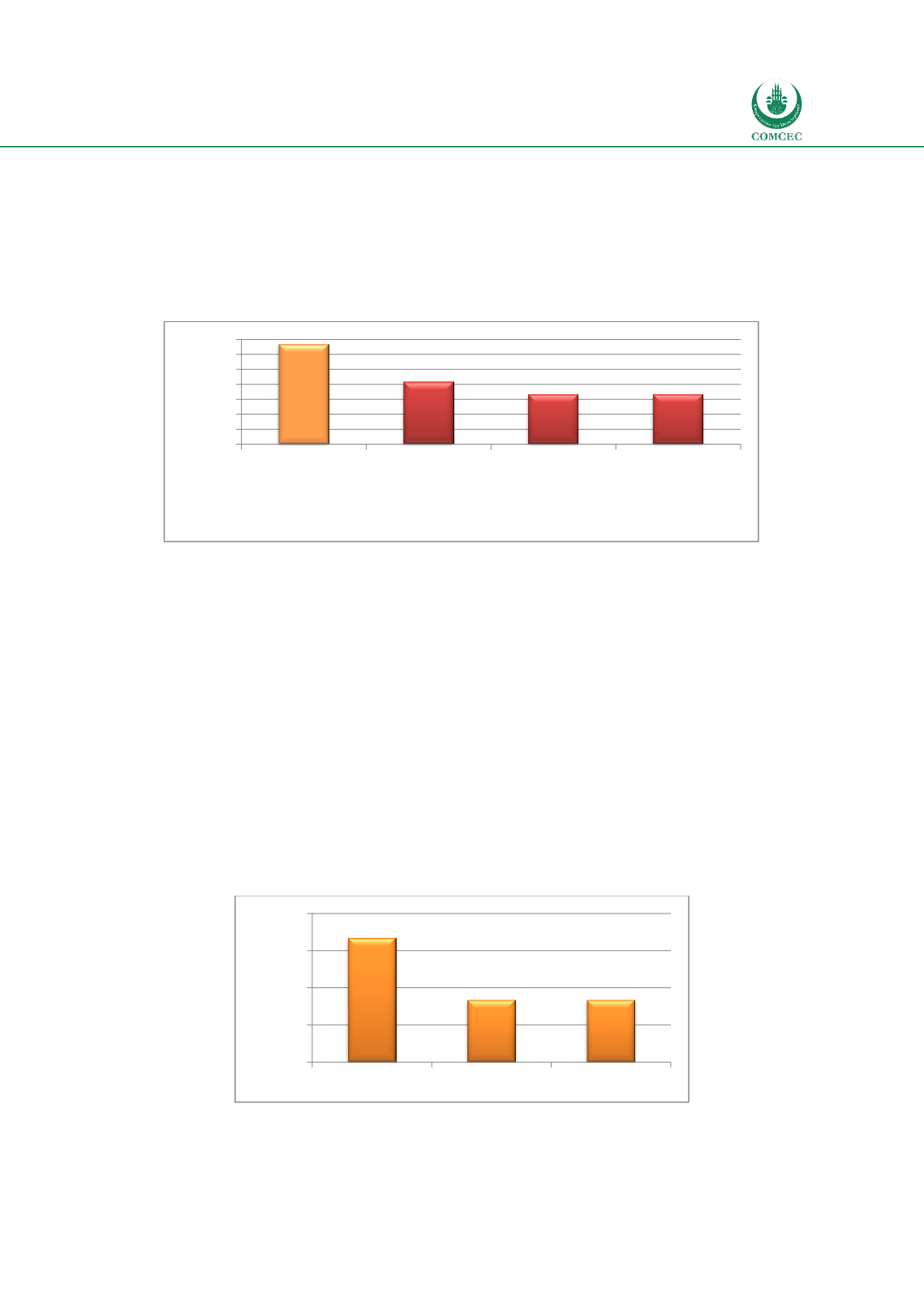

National and Global Islamic Financial Architecture:
Prolems and Possible Solutions for the OIC Member Countries
199
conventional finance. Civil courts in 41.7% of the countries in the sample deal with Islamic
finance disputes. While some countries (Oman, Saudi Arabia and Oman) use Islamic law to
adjudicate cases in courts, other countries (Malaysia and Pakistan) seek advice on Shariah
issues from external Shariah boards. One third of the countries (33.3%) have arbitration
centers that deal with disputes of Islamic banks and also have bankruptcy laws that deal with
issues related to bankruptcies related to Islamic banks.
Chart
6.2: Countries with Islamic Legal Infrastructure (% of total)
In conclusion, while the tax laws in the sample countries have the status of ‘developing’, the
other legal infrastructure institutions (dispute resolution in courts and arbitration centers and
bankruptcy laws) are ‘underdeveloped’.
6.2.2.
Regulation and Supervision
Chart 6.3 shows that in 66.7% of the case-studies, countries have a regulatory framework for
Islamic banking and 58.3% have the same for the takafula and capital market sectors. Overall,
the average regulatory framework in the sample countries scores the status of ‘developing’.
However, relatively fewer countries have specific regulatory departments or units that deal
with Islamic financial sectors. Chart 6.4 shows that, while 50% of the countries have a separate
department dealing with the Islamic banking sector, only 40% of the countries has such
departments for the takaful and Islamic capital market sectors. Thus the institutional
arrangements of having separate departments to regulate Islamic financial sectors in the case-
study countries are ‘underdeveloped’.
Chart
6.3: Regulatory Framework Islamic Financial Sector
66,7
41,7
33,3
33,3
0
10
20
30
40
50
60
70
Tax laws
Dispute
Resolution (in
Courts)
Dispute
Resolution
(Arbitration
Centers)
Bankruptcy Laws
Percentage of total
66,7
58,3
58,3
50
55
60
65
70
Banking
Takaful
Capital Market
Percetnage of total
















